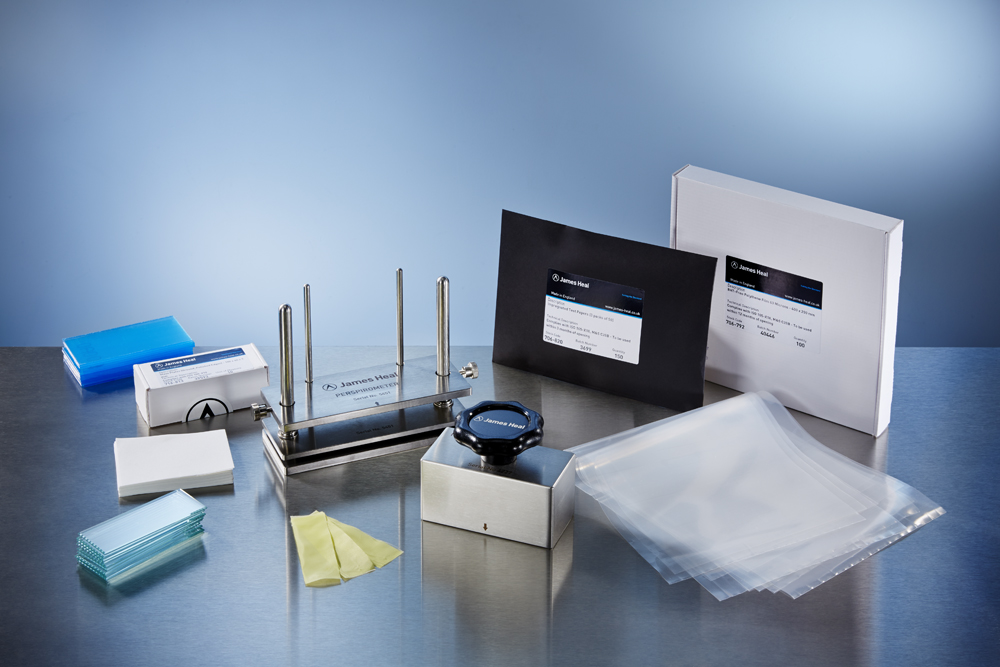Color resistant to Phenolic Yellowing
This is a predictive test to assess the potential of white or pastel-coloured yarns, fabrics or garments to yellow. The test was developed by Courtaulds Research for investigating complaints arising from transit or storage yellowing.
The risk of phenolic yellowing is evaluated by a contact test. The procedure is based on a test paper, which has been mechanically impregnated with a methanol solution containing the phenolic compound. The test paper is folded along its axis and the specimen to be tested is sandwiched between the two layers. The sandwich is then placed between two glass plates. (Do not use acrylic or plastic plates).
A standard test package consists of five (5) test specimens and one (1) control fabric – each separated by a glass plate – making a total of seven (7) glass plates. If there are more than five test specimens, additional test packages are prepared. Each package is wrapped in BHT-free polythene film. The packages are closed and sealed with ordinary adhesive tape. To ensure uniform contact between the test papers and the test specimens, the packages are placed in a perspirometer – up to three (3) test packages in one instrument. The pressure is standardised by the application of a weight. Up to four (4) perspirometers are placed in an incubator or oven, at a temperature of 5O° ± 3°C. The treatment time is 16h, which permits one day’s specimens to be incubated overnight and to be assessed on the following day.
At the end of the test, the perspirometers are removed from the incubator or oven, the test packages are taken out and are allowed to cool. The test is considered valid, if the control fabric has turned yellow. The specimens are compared with their originals, and the intensity of yellowing is assessed with a standard grey scale (or relative yellowness index values).
Sign up for advice
- Hotline0938 078 338
- emailinfo@thachanhvang.com




